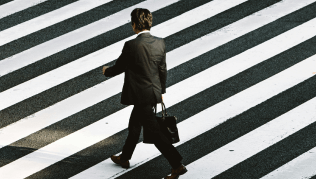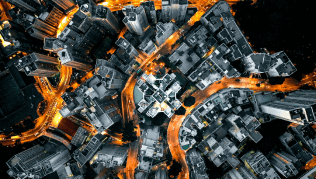Photography, as both an art form and a medium for documentation, has played a significant role in shaping how we see the world. Over the decades, photographic exhibitions have transformed from niche displays into prominent platforms for showcasing artistic expression, cultural narratives, and social change. These exhibitions not only highlight the technical and creative skills of photographers but also serve as a vital means of fostering dialogue, pushing boundaries, and shaping the public’s understanding of visual storytelling.
In this article, we’ll explore the evolution of photographic exhibitions, highlight some of the most iconic shows through history, and examine how ZiiP Foundation aims to contribute to the future of photographic exhibitions by offering innovative platforms for artists to showcase their work.
Table of Contents
The Early Days of Photographic Exhibitions
The history of photographic exhibitions dates back to the mid-19th century, shortly after the invention of the camera. As photography grew from a technical innovation into an art form, it began to be recognized alongside painting and sculpture in galleries and exhibitions.
1. The First Public Exhibition of Photography (1839)
The first-ever public exhibition of photographs took place in Paris in 1839, when Louis Daguerre, one of the pioneers of photography, presented his daguerreotypes to the world. This marked a pivotal moment in photography’s history, as it was the first time the general public had been exposed to the potential of the new medium. The public was amazed at photography’s ability to capture reality with such precision, something no other medium had achieved before.
This exhibition paved the way for photography to be recognized as a legitimate art form, and by the late 19th century, photographers began showcasing their work in exhibitions around the world.
2. The 1859 American Photographic Exhibition
In the United States, one of the earliest exhibitions dedicated to photography took place in Boston in 1859. This event, organized by the Massachusetts Charitable Mechanic Association, displayed more than 200 photographs. It is noteworthy for being one of the first major exhibitions that treated photography as an art form rather than merely a scientific curiosity. The exhibition showcased a range of subjects, including portraits, landscapes, and cityscapes, reflecting photography’s growing versatility.
These early exhibitions were primarily focused on showcasing the technical achievements of photography rather than its artistic potential. However, as the medium evolved, so did the nature of photographic exhibitions, with a greater emphasis placed on the creative and expressive aspects of the art form.
The Rise of Photography as an Art Form in Exhibitions
As photography matured, the role of exhibitions shifted from purely technical displays to artistic showcases. By the early 20th century, photography exhibitions were being organized in museums and galleries, further solidifying the medium’s place in the fine arts.
1. Alfred Stieglitz and the Photo-Secession Movement (1902)
One of the most influential figures in elevating photography to the status of fine art was Alfred Stieglitz, an American photographer and gallerist. In 1902, Stieglitz founded the Photo-Secession movement, which aimed to promote photography as a legitimate art form. Stieglitz believed that photography was more than just a mechanical process and that it could be used as a medium for artistic expression.
To further this cause, Stieglitz opened Gallery 291 in New York, which became one of the first galleries to showcase photography alongside paintings and sculptures. The exhibitions held at Gallery 291 were groundbreaking in their approach, as they celebrated photography as an art form in its own right, rather than just a tool for documenting reality.
Stieglitz’s work laid the foundation for future generations of photographers and curators who saw photography as a means of artistic expression, rather than simply a mechanical reproduction of the world.
2. The Family of Man (1955)
One of the most iconic and influential photographic exhibitions in history was The Family of Man, curated by Edward Steichen for the Museum of Modern Art (MoMA) in New York in 1955. This exhibition featured 503 photographs by 273 photographers from 68 countries and aimed to capture the universal human experience. It was one of the first exhibitions to present photography as a tool for fostering global understanding and empathy.
What made The Family of Man so significant was its global reach and its emphasis on photography as a medium for social change. The exhibition traveled to 37 countries and was viewed by more than 9 million people. The images, which ranged from moments of joy and celebration to scenes of war and hardship, demonstrated the power of photography to connect people across cultural divides.
This exhibition set the stage for future photographic shows that used visual storytelling to engage with pressing social and political issues.
The Modern Era of Photographic Exhibitions
By the mid-20th century, photography had firmly established itself as a vital form of artistic expression. In the decades that followed, photographic exhibitions became more diverse, with a wide range of themes, styles, and formats emerging. These exhibitions reflected the growing complexity and versatility of the medium.
1. Documenta and the Rise of Conceptual Photography (1960s-1970s)
The rise of conceptual photography in the 1960s and 1970s brought new ideas and approaches to photographic exhibitions. Major art events such as Documenta in Germany began to feature photography as a medium for conceptual and experimental work, where photographers pushed the boundaries of what the medium could achieve. Exhibitions during this period often challenged the viewer’s perception of reality, using photography to question societal norms and explore abstract concepts.
Photographers like Diane Arbus, Andreas Gursky, and Cindy Sherman emerged as leaders in this era, showcasing work that blurred the lines between reality and fiction. Their exhibitions in galleries and museums around the world helped shape photography’s role in contemporary art.
2. Photography Biennials and the International Photography Scene
As photography continued to evolve, international biennials dedicated exclusively to the medium began to emerge. Events such as the Rencontres d’Arles in France and the Photo London festival provided photographers with global platforms to showcase their work to diverse audiences.
These events also contributed to the globalization of photography, highlighting artists from various cultural backgrounds and regions. The inclusion of photography in major international art fairs and biennials reflected the medium’s growing significance within the broader art world.
ZiiP Foundation’s Role in the Future of Photographic Exhibitions
As photography continues to evolve, new platforms and opportunities are emerging for artists to showcase their work. The ZiiP Foundation aims to contribute to the future of photographic exhibitions by providing photographers with innovative spaces to display their art, fostering cultural exchange, and elevating the visibility of diverse voices in the photography community.
1. Promoting Emerging Talent
One of ZiiP Foundation’s key initiatives is to provide emerging photographers with the opportunity to showcase their work on a global stage. By organizing exhibitions that highlight new talent, ZiiP aims to bridge the gap between aspiring photographers and established professionals. These exhibitions will feature a wide range of genres, from documentary photography to fine art, offering a platform for photographers to gain exposure and connect with a global audience.
2. Cultural Exchange Through Photography
ZiiP Foundation recognizes the importance of fostering cultural exchange through photography. By organizing exhibitions that feature photographers from diverse backgrounds and regions, ZiiP aims to create a dialogue between cultures and perspectives. These exhibitions will emphasize the role of photography in breaking down barriers, promoting empathy, and facilitating cross-cultural understanding.
ZiiP Foundation’s commitment to showcasing global talent aligns with the tradition of exhibitions like The Family of Man, which sought to highlight the shared human experience through visual storytelling.
3. Innovative Exhibition Formats
In addition to traditional gallery exhibitions, ZiiP Foundation is exploring innovative formats for showcasing photography. This includes virtual exhibitions, outdoor installations, and interactive experiences that engage viewers in new ways. By embracing cutting-edge technology, ZiiP aims to make photography more accessible to a broader audience and create new opportunities for artistic expression.
Through its forward-thinking approach, ZiiP Foundation is poised to play a significant role in shaping the future of photographic exhibitions.
Conclusion
The evolution of photographic exhibitions has been a fascinating journey, from early technical displays to modern showcases of artistic expression and social change. Over the years, these exhibitions have provided photographers with a platform to share their vision, challenge societal norms, and foster global understanding.
As we look to the future, ZiiP Foundation will play a crucial role in continuing this tradition by promoting emerging talent, facilitating cultural exchange, and exploring new exhibition formats. By supporting photographers and offering them innovative platforms to showcase their work, ZiiP Foundation is helping to ensure that photographic exhibitions remain a vital and dynamic part of the global art scene.
As the photography world continues to grow and diversify, exhibitions will remain at the heart of this transformation, allowing photographers to share their stories and connect with audiences around the world.

